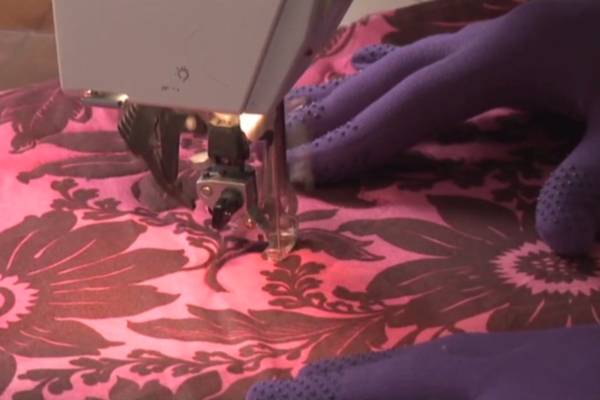
Why Is My Sewing Machine Sewing Upside Down? (Stitch)
Have you ever thought that you were in a time warp when you see your top-of-the-line sewing machine sew upside down? It is not a good feeling as you just spent thousands of dollars on the sewing machine and it can’t even stitch right.
Why is my sewing machine sewing upside down? All this problem indicates is that the top or bottom, or both, tension is too loose. A slight adjustment to the tension dials should solve this problem.
To learn more about this problem and the solutions you can use to rectify it just continue to read our article. It has the information you want to know about. Take a couple of minutes to learn why this issue keeps happening.
Why is my Sewing Machine Sewing Upside Down

The reason is not that the sewing machine decided to do something different or thought outside the box. Nor is it trying to push the envelope. This problem can be called a common sewing problem that doesn’t take a lot to fix.
If the bobbin thread is appearing on the top and the top thread is appearing on the bottom the source is the tension. One, the other, or both tension settings are too loose. That is a simple issue to fix.
All you have to do is tighten the tension a little bit and everything will return to normal. before you return to sewing on your good fabric though, you should do a little test to make sure the threads are staying on their proper sides. A little test will let you know if you got the adjustment right.
Stitch Upside Down

It is possible to purposefully stitch upside down. All you have to do is employ the split stitch and this option has the back of your embroidery work look like the front. But if you are not purposefully stitching upside down or turned your embroidery design upside down to work on, then you have a little problem to deal with.
Upside down stitches will ruin your project or have them take longer to complete as you have to stop what you are doing. Then you have to hunt down the source of the problem and spend time trying to fix it.
Generally, the problem will be with your sewing machine. Something is not right and you need to spend time fiddling with the dials, the controls, or the touch screen to see if you can fix it. If you can’t find the source of the problem or both threads are on the wrong side, you will need to go to a repairman to solve the problem.
Why is My Zig-Zag Stitch Upside Down?

The first place to look after checking the tension would be the threading pattern. You may have mistakenly threaded the machine without raising the presser foot all the way to the top and the thread did not fully enter the slots, holes and follow the correct route.
Another source to look at would be the type of thread you have in the top spool and the bottom bobbin. If they are not the same, your stitches may not appear as they are supposed to.
For example, one sewer thought the color of the thread was the problem when in reality, one thread type was normal and the color with the problem was an embroidery thread. Then if you are new to a machine or you have a new machine, make sure to sew with the owner’s manual next to you.
It is possible to assume all sewing machines work the same when in actuality they do not.
Brother Sewing Machine Sewing Upside Down

This may not be as big a problem as you might imagine. This company, always looking for an innovative edge over its competitors, has created a bobbin that works with specialty threads.
Why is that unique and an edge? The stitch pattern looks like it is being sewn in reverse and upside down. This bobbin kit allows you to embellish your sewing design with a new way to sew. This bobbin case is included with some sewing machine models you can buy from this company.
If you are not intentionally using that special bobbin, you may have the wrong bobbin in your bobbin case. Also, check the tension to see if those are set right. Also, you may have to re-thread the machine to fix this issue.
Singer Sewing Machine Upside Down

If re-threading or re-setting the tension on your sewing machine does not work, we would suggest that you go to a qualified and Singer-approved repairman. When the simple fixes do not solve the problem then there is something else wrong with the machine and it may be beyond your skill level to handle.
This is true if your machine is still under warranty. Make full use of the warranty coverage and have a repairman handle all repairs, no matter how simple. Protecting yourself is the key issue here.
Besides the warranty factor, we suggest this because sometimes the manual does not cover the upside-down issue. Sources to check would be your needle, make sure it is the right one, sharp and not bent. The bobbin and make sure it is the right one as well.
Check your threads and make sure they are made for the fabric and the same type.
Some Final Words
Upside down sewing may sound cool but if you are not intentionally trying to do that, then that is a sign you have a minor problem with your machine. Check your tension first, then your bobbin and needles and if those are not the source of the problem, contact a good repairman who knows his stuff.
You never know when it is the machine itself causing the problem.

